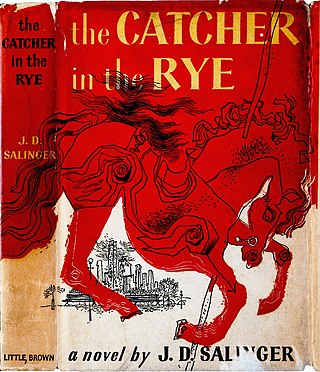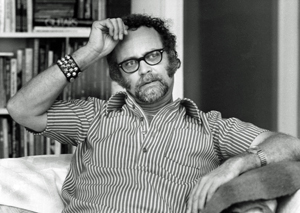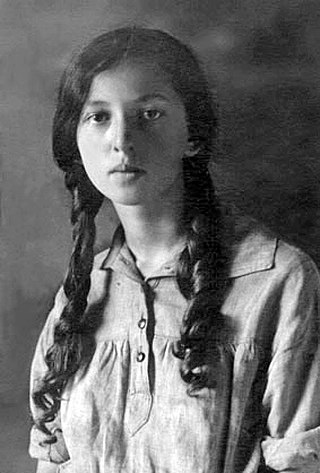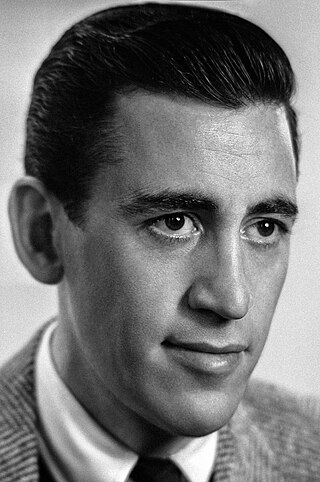Related Research Articles

Polly Jean Harvey is an English singer-songwriter. Primarily known as a vocalist and guitarist, she is also proficient with a wide range of instruments.

The Catcher in the Rye is a novel by American author J. D. Salinger that was partially published in serial form in 1945–46 before being novelized in 1951. Originally intended for adults, it is often read by adolescents for its themes of angst and alienation, and as a critique of superficiality in society. The novel also deals with themes of innocence, identity, belonging, loss, connection, sex, and depression. The main character, Holden Caulfield, has become an icon for teenage rebellion. Caulfield, nearly of age, gives his opinion on a wide variety of topics as he narrates his recent life events.

Nine Stories is a collection of short stories by American fiction writer J. D. Salinger published in April 1953. It includes two of his most famous short stories, "A Perfect Day for Bananafish" and "For Esmé – with Love and Squalor"..

Joyce Maynard is an American novelist and journalist. She began her career in journalism in the 1970s, writing for several publications, most notably Seventeen magazine and The New York Times. Maynard contributed to Mademoiselle and Harrowsmith magazines in the 1980s, while also beginning a career as a novelist with the publication of her first novel, Baby Love (1981). Her second novel, To Die For (1992), drew on the Pamela Smart murder case and was adapted by Gus Van Sant into the film To Die For in 1995. Maynard received significant media attention in 1998 with the publication of her memoir At Home in the World, in which she describes her relationship with J. D. Salinger.

William Patrick "W. P." Kinsella was a Canadian novelist and short story writer, known for his novel Shoeless Joe (1982), which was adapted into the movie Field of Dreams in 1989. His work often concerned baseball, First Nations people, and Canadian culture.
"A Perfect Day for Bananafish" is a short story by J. D. Salinger, originally published in the January 31, 1948, issue of The New Yorker. It was anthologized in 1949's 55 Short Stories from the New Yorker, as well as in Salinger's 1953 collection Nine Stories. The story is an enigmatic examination of a young married couple, Muriel and Seymour Glass, on vacation in Florida. It is the first of his stories to feature a member of the fictional Glass family.

Michael John Harvey is an Australian musician, singer-songwriter, composer, arranger and record producer. A multi-instrumentalist, he is best known for his long-term collaborations with Nick Cave, with whom he formed The Boys Next Door, The Birthday Party and Nick Cave and the Bad Seeds.
BobRussell was an American songwriter born in Passaic, New Jersey.
"De Daumier-Smith's Blue Period" is a short story by J. D. Salinger, first published in the May 1952 edition of World Review (London). Declined by The New Yorker on November 14, 1951, as the piece was judged too short to adequately address the complex religious concepts that Salinger attempted to convey. It is known that Salinger struggled with writing it for over five months in 1951. While the New Yorker initially declined this story, Salinger still managed to publish Pretty Mouth and Green My Eyes in the July 1951 edition of The New Yorker.
"Young Hunting" is a traditional folk song, Roud 47, catalogued by Francis James Child as Child Ballad number 68, and has its origin in Scotland. Like most traditional songs, numerous variants of the song exist worldwide, notably under the title of "Henry Lee" and "Love Henry" in the United States and "Earl Richard" and sometimes "The Proud Girl" in the United Kingdom.
The 1951 novel The Catcher in the Rye by J. D. Salinger has had a lasting influence as it remains both a bestseller and a frequently challenged book. Numerous works in popular culture have referenced the novel. Factors contributing to the novel's mystique and impact include its portrayal of protagonist Holden Caulfield; its tone of sincerity; its themes of familial neglect, tension between teens and society, and rebellion; its previous banned status; and Salinger's reclusiveness. The Catcher in the Rye has inspired "rewrites" which have been said to form their own genre. On the other hand, there are examples of similarities between the novel and other works that were not intended by their authors, which suggests that the novel is "present, at least spiritually, in ... any story line that involves quirky young people struggling to find their places in a society prone to reward conformity and condemn individuality."

John Parish is an English musician, songwriter, composer and record producer.

Nora Gal, full name Eleonora Yakovlevna Galperina was a Soviet translator, literary critic, and translation theorist.
Andy "Andro" Ernst is a music producer, engineer, musician, and songwriter from San Francisco. Artists he has worked with include: Green Day, AFI, Sway & King Tech, Rancid, Tiger Army, The Nerve Agents, Malo, Link 80, Screeching Weasel, Swingin' Utters, Screw 32, Good Riddance, Fury 66, Shock G and Money B. The majority of his work has been punk rock. Ernst owns and operates the Art of Ears Studio in Hayward, California, previously located in San Francisco.

The discography of PJ Harvey, an English alternative rock musician, consists of ten studio albums, two collaboration albums with John Parish, twenty-two singles, one extended play, three compilation albums and a number of collaborations with other artists.

Jerome David Salinger was an American author best known for his 1951 novel The Catcher in the Rye. Salinger published several short stories in Story magazine in 1940, before serving in World War II. In 1948, his critically acclaimed story "A Perfect Day for Bananafish" appeared in The New Yorker, which published much of his later work.
"Retreat Syndrome" is a 1965 short story by American writer Philip K. Dick. The story contains some common Dick themes such as a questionable reality and drug use. It was first published in Worlds of Tomorrow Science Fiction and was later reprinted the collections The Preserving Machine (1969), The Preserving Machine and Other Stories (1977), We Can Remember It For You Wholesale (2000) and The Eye of the Sibyl and Other Stories (2004).
Yuya Sato is a Japanese novelist from Hokkaido Prefecture. He won the 21st Mephisto Prize for Flicker Style, and the 20th Yukio Mishima Prize for 1000 Novels and Backbeard. His works have been translated into English, Chinese and Korean. Sato's short story "Same As Always" was translated for The Penguin Book of Japanese Short Stories (2018), and has been described as "an acerbic meditation on the complex interplay of gender and nurturing in post-Fukushima Japan."

Three Early Stories is a posthumous publication of American author J. D. Salinger, published in 2014, comprising three stories: "The Young Folks", "Go See Eddie" and "Once a Week Won't Kill You".
References
- ↑ Salinger, J. D. (Jerome David), 1919-2010. (1953). Nine stories . Boston: Little, Brown. ISBN 0316767727. OCLC 232747.
{{cite book}}: CS1 maint: multiple names: authors list (link) CS1 maint: numeric names: authors list (link) - ↑ Weaver, Brett (2019-01-02). "Take that, Charlie Chaplin! The meaning of names in J.D. Salinger's PRETTY MOUTH AND GREEN MY EYES". The Explicator. 77 (1): 1–3. doi:10.1080/00144940.2018.1513905. ISSN 0014-4940. S2CID 166543645.
- 1 2 J.D. Salinger: Special Number. Lafayette, Indiana: Modern Fiction Club, Dept. of English, Purdue University. 1966.
- ↑ Burrell, Angus (1953). An Anthology of Famous American Stories. Modern Library.
- ↑ Lundquist, James (1979). J.D. Salinger. New York: Ungar. pp. 101–102.
- ↑ Bourniquel, Camille (1965). J.D. Salinger -- American Writers 51. Minnesota: University of Minnesota Press. pp. 4–45.
- ↑ И эти губы, и глаза зелёные… at IMDb
- ↑ Grow, Kory (2020-12-03). "PJ Harvey's Rough, Guitar-Centric 'Angelene' Demo Shows Another Side of Her 'Desire'". Rolling Stone. Retrieved 2021-04-09.
- ↑ "PJ Harvey – Is This Desire? – Classic Music Review". altrockchick. 2014-10-16. Retrieved 2021-04-09.
- ↑ "Angelene by PJ Harvey". www.songfacts.com. Retrieved 2021-04-09.